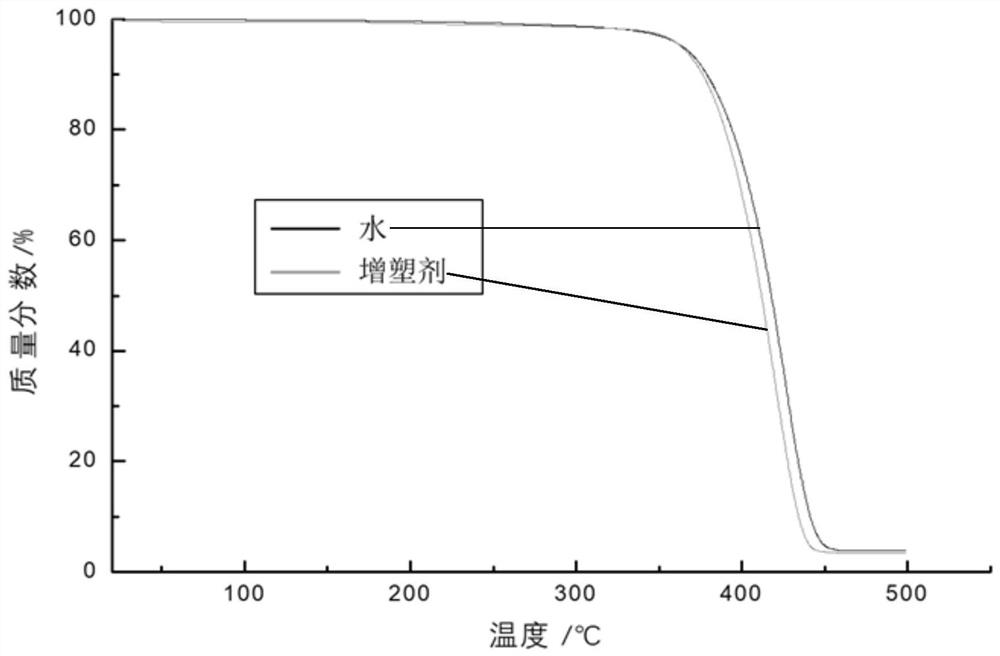A kind of carrier dyeing process of polybutylene succinate fiber
A polybutylene succinate, carrier dyeing technology, applied in the direction of dyeing, textile and paper making, etc., can solve the problems of low dye uptake in ordinary dyeing, achieve high color fastness, solve the problem of low dye uptake, Fiber strength has no effect
- Summary
- Abstract
- Description
- Claims
- Application Information
AI Technical Summary
Problems solved by technology
Method used
Image
Examples
Embodiment 1
[0025] (1) The impurity removal process is as follows: the polybutylene succinate fiber is added to a treatment solution containing 2g / L detergent POEA and 2g / L sodium carbonate, treated at a temperature of 60°C for 30min, washed with water and then dried spare.
[0026] (2) the carrier preparation process is: the dosage of dodecyldimethylbenzyl ammonium chloride is 1%, the dosage of dimethyl succinate is 10%, and the amount of water is supplemented to 100% (the percentages are all volume ratios), The emulsification temperature was room temperature, the emulsification time was 10min, and the emulsifier speed was 8000rpm.
[0027] (3) The dyeing process is: low temperature type disperse dye 2% (o.w.f), pH=5, carrier dosage 10g / L, bath ratio 1:30. The reduction cleaning process is as follows: hydrosulfite 2g / L, sodium hydroxide 2g / L, bath ratio 1:30, reduction cleaning at 60°C for 20min, and drying after washing with water.
Embodiment 2
[0029] (1) The impurity removal process is as follows: the polybutylene succinate fiber is added to the treatment solution containing 2g / L detergent 6501 and 2g / L sodium carbonate, treated at a temperature of 60°C for 30min, washed with water and then dried spare.
[0030] (2) The carrier preparation process is: the amount of octadecyltrimethylammonium chloride is 2%, the amount of diethyl succinate is 15%, the amount of water is supplemented to 100% (the percentages are all volume ratios), and the emulsification temperature is room temperature, the emulsification time is 20min, and the speed of the emulsifier is 10000rpm.
[0031] (3) The dyeing process is: disperse dye 3% (o.w.f), pH=6, carrier dosage 15g / L, bath ratio 1:40. The reduction cleaning process is as follows: hydrosulfite 2g / L, sodium hydroxide 2g / L, bath ratio 1:30, reduction cleaning at 70° C. for 10min, and drying after washing with water.
Embodiment 3
[0033] (1) The impurity removal process is as follows: the polybutylene succinate fiber is added to a treatment solution containing 2g / L detergent POEA and 2g / L sodium carbonate, treated at a temperature of 60°C for 30min, washed with water and then dried spare.
[0034] (2) The carrier preparation process is: sodium lauryl sulfate and Tween 80 dosage are 2% each, ethyl acetate dosage is 15%, water dosage is supplemented to 100% (the percentages are all volume ratios), and the emulsification temperature is room temperature , emulsification time 20min, emulsifier speed 10000rpm.
[0035] (3) The dyeing process is: disperse dye 2% (o.w.f), pH=5, carrier dosage 15g / L, bath ratio 1:30. The reduction cleaning process is as follows: hydrosulfite 2g / L, sodium hydroxide 2g / L, bath ratio 1:20, reduction cleaning at 60°C for 15min, and drying after washing with water.
PUM
| Property | Measurement | Unit |
|---|---|---|
| glass transition temperature | aaaaa | aaaaa |
| heat deflection temperature | aaaaa | aaaaa |
| melting point | aaaaa | aaaaa |
Abstract
Description
Claims
Application Information
 Login to View More
Login to View More - R&D
- Intellectual Property
- Life Sciences
- Materials
- Tech Scout
- Unparalleled Data Quality
- Higher Quality Content
- 60% Fewer Hallucinations
Browse by: Latest US Patents, China's latest patents, Technical Efficacy Thesaurus, Application Domain, Technology Topic, Popular Technical Reports.
© 2025 PatSnap. All rights reserved.Legal|Privacy policy|Modern Slavery Act Transparency Statement|Sitemap|About US| Contact US: help@patsnap.com


